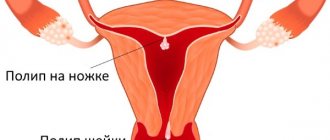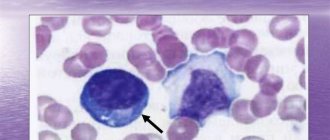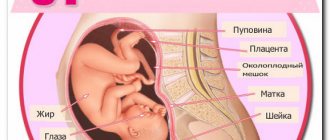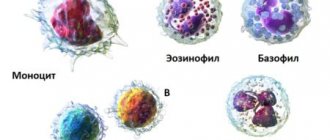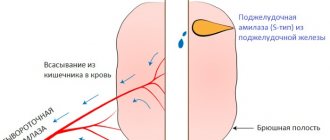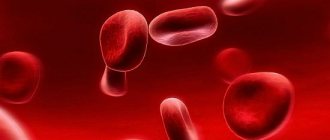Research methodology
The size of the liver is determined by a specialist. The procedure lasts 15-30 minutes. It is performed in a lying position, but if necessary, the person is asked to stand or sit.
A special gel is applied to the skin in the projection of the liver to improve gliding. The specialist passes a sensor that emits ultrasound over the skin. The waves are reflected from different liver structures at different speeds, which gives a visual image on the monitor. The doctor can evaluate the volume, structure, morphology, and homogeneity of tissues.
Estimated price for liver testing
CVR of the liver (the norm in adults is slightly different from that in children) is carried out in many medical centers and outpatient clinics.
Cost of the procedure:
- Ultrasound of the liver with color circulation: from 2 thousand rubles.
- Ultrasound of the abdominal organs (pancreas, gall bladder, liver): from 2 thousand 300 rubles.
- Ultrasound, which evaluates the intrahepatic bile ducts, the structure of the organ, its contours: from 1 thousand 200 rubles.
- Comprehensive ultrasound of the abdominal organs: from 1 thousand 200 rubles.
The price of a diagnostic procedure depends on the scale of the study and the prestige of the medical institution.
For prevention and control of normal indicators, adult patients should undergo a complete examination of the abdominal organs annually. In this case, doctors will determine the size of the liver using the diagnostic methods of CVR, CCR, determine the condition of the gallbladder, pancreas, spleen, and detect pathologies, if any, at an early stage.
Liver size on ultrasound: normal in adults and children
The normal size of the liver in women according to ultrasound, as in men, is within the same limits. But during pregnancy, the organ may have a slightly enlarged shape.
Normal liver sizes according to ultrasound are shown in the tables.
Organ as a whole
| Height | Thickness | Length |
| 18.5—22.5 cm | 9-12 cm | 14-18 cm |
Right lobe
| Height | Thickness | Length |
| 8.5—12.5 cm | 11-13 cm | 11-15 cm |
Left lobe
| Height | Thickness | Length |
| 10 cm | 7 cm | 3 cm |
This is the normal size of the liver according to ultrasound in an adult.
The boundaries of the liver should have a uniform contour. In a healthy person, the liver tissue is homogeneous and granular. It shows clearly defined visually tubular walls of blood vessels. The diameter of the portal vein is 1-2 cm. The vein is connected to the hilum of the organ (a groove on the lower surface).
Acceptable rates in children vary depending on age. The child's body is constantly growing, and parameters change accordingly. The average size of the right lobe of the liver in an infant is 5 cm. At 2 years it increases to 6.5 cm. At 5 years this figure reaches 8.5 cm, and by 12 years - 10 cm. At 18 years the figure is close to the norm for adults - 12 cm.
In the absence of diseases in the child, the liver should have correct, clear lines of all segments. The structure is homogeneous, the portal vein is clearly visible.
Condition of the gallbladder and its ducts
Since the functioning of the liver will directly depend on the performance of the gallbladder, characterizing its condition is a generally accepted stage in the process of ultrasound scanning.
In a healthy gallbladder, the walls and boundaries are unchanged. The vertical line of the organ is approximately 5-6 cm, and the thickness of the walls is 2-3 mm. The diameter of the ducts should be up to 6-9 mm. Normally it holds some liquid. Deviations to a smaller or larger direction indicate the development of pathology.
A decrease in the size of the gallbladder indicates dyskinesia, and its increase indicates excess bile production. The presence of sediment, which then forms into a stone, indicates the onset of a disease such as cholelithiasis. Stretching of the ducts will help to suspect congestion.
What do deviations mean?
Deviations from normal values may indicate both minor and serious illnesses.
Sizing changes
An increase in size with a normal structure is regarded as an indicator:
- cardiac disorders, in which an ultrasound machine shows dilation of the hepatic veins;
- hepatitis in acute form;
- fibrosis and cirrhosis;
- tropical hepatomegaly, which is accompanied by an increased size of the liver and spleen;
- infections with Schistosoma mansoni or Schistosoma japonicum, involving the proliferation of fibrous tissue near the portal vein.
Downsizing is also possible, although this is rare. The reduction is caused by massive necrosis, vitamin deficiency, and untreated liver infections.
If therapy is not started in a timely manner and the cause of pathological changes in the organ is not eliminated, serious complications may develop, which are sometimes impossible to get rid of.
Another reason for the decrease in size is the inability of hepatocytes (liver cells) to perceive insulin and, as a result, receive enough glucose. This happens with some hereditary and autoimmune diseases and poor nutrition.
Changes in echogenicity
An increase in size indicators along with morphological changes, when echogenicity is increased, can be a sign of the following diseases:
- Cirrhosis. The size of the liver lobes differs from the norm. The surface of the tissue is uneven and covered with knots and tubercles.
- Fatty hepatosis. A chronic process in which dead liver cells are replaced by fat cells.
With a decrease in echogenicity, we can talk about diseases such as:
- Acute hepatitis. This pathology is characterized by decreased echogenicity and tissue swelling. The structure of the parenchyma is heterogeneous.
- Hepatitis in chronic form. The volume of the liver is increased, the vessels are poorly visible.
Other pathological signs
If an ultrasound diagnostician has detected heterogeneity of morphology, multiple focal neoplasms and the presence of free fluid, these may be the following diseases:
- Metastases. A common pathology, the diagnosis of which is very difficult, since it is difficult to determine the primary focus of cancer.
- Budd-Chiari syndrome. It is characterized by a violation of the outflow of blood through the veins of the liver due to the narrowing of their lumens. Additional symptoms are swelling of the legs and abdomen, abdominal pain, kidney failure.
- Hepatoma. This is a malignant tumor that contributes to the rapid loss of liver function. The trigger mechanism is hepatitis or cirrhosis.
- Hemangioma. As a rule, this benign tumor is diagnosed in women. Medicine cannot yet explain this phenomenon. Primary symptoms are subtle, so it is almost impossible to detect the disease in the early stages.
- Lymphoma. Pathologically altered lymphocytes due to pathology of internal organs settle in the liver.
Cystic neoplasms are also clearly visible on ultrasound. The examination reveals:
- Solitary cyst. Education is present from birth and does not pose a health hazard. Differential diagnosis by biopsy is required, since the formation is morphologically similar to a parasitic cyst.
- False cyst. Appears after surgical interventions, inflammatory diseases, injuries.
Dangerous complications of cysts are purulent processes and hemorrhages. Abscesses or disintegrating tumors can be seen on ultrasound.
The most difficult to identify is considered to be a parasitic cyst that forms from a colony of echinococcus.
In case of cancer, ultrasound visualizes areas with uneven contours and reduced background echogenicity. A malignant neoplasm additionally provokes an increase in the size of the lymph nodes and displacement of the gallbladder.
What diseases are accompanied by size deviations from the norm?
Ultrasound examination with high reliability determines a number of diseases of the hepatobiliary system, the main ones are:
- wounds, mechanical injuries, ruptures;
- purulent inflammatory lesions (abscesses), hepatitis of any etiology, degenerative changes caused by metabolic disorders in gland cells (fatty and cholestatic hepatosis) - inflammatory diseases;
- cysts, tumors, lipomas, angiomas (neoplasms of various nature);
- vascular pathologies;
- infectious inflammation of the bile ducts (cholangitis);
- helminth infections;
- fatal liver disease (cirrhosis);
- proliferation of connective tissue with scar changes (fibrosis).
For a more detailed examination, the patient may additionally be recommended other hardware techniques: duodenal intubation (diagnosis with parenteral administration of a stimulus), X-ray or X-ray cholangiography, MRI cholangiography.
The liver is the only organ that has the property of self-regeneration, but with a disregard for health, its capabilities are limited. Diseases of the hepatobiliary system are always severe pathologies that require a forced change in lifestyle. The gland should not be subjected to excessive stress in the form of alcohol, unhealthy foods, or fatty foods.
What additional ultrasound techniques are used?
Additional ultrasound techniques include elastometry and Doppler ultrasound. They are used as auxiliary for a more in-depth study of pathological processes in the liver.
On ultrasound, special importance is attached to the structural characteristics, the level of homogeneity of the organ, the state in which the bile ducts, small branches and large vessels are located, and the measurement of all lobes of the gland.
Ultrasound does not provide complete information for all liver diseases.
Elastometry
If the liver is normal when examined by ultrasound, then this method is not used. Elastometry (elastography, fibroscanning) allows you to assess the degree of proliferation of fibrous tissue. This process is dangerous because if left untreated it leads to cirrhosis. The duration of the diagnosis is 10-15 minutes.
The elasticity of the tissues of an organ shows whether there is fibrosis, what is its degree of activity and severity. The results are based on ultrasound readings taken from dozens of points. The study reflects the density of the organ, and the data obtained is designated kiloPascals (kPa).
Doppler
Through Doppler sonography, the specialist gets an accurate picture of the blood vessels of the liver, the presence of their narrowing or thrombosis, and the speed of blood flow. The method also makes it possible to visualize the pathology of the gallbladder ducts.
When diagnosing with this method, bubbles of inert gas are used, which generate a signal. Changing its frequency, acoustic pressure and pulse repetition affects the rate of oscillation of the contrast agent. This property allows you to visualize vessels and capillaries. Sometimes Doppler ultrasound is prescribed with the introduction of a contrast agent - then you need to prepare for the study in advance.
With the help of Doppler, poorly defined anechoic neoplasms are displayed, which makes it possible to differentiate between benign and malignant liver tissue damage. In most cancers, the diameter of the arteries increases. This changes the picture on the ultrasound.
Parameters of liver vessels
The scan includes characteristics of the vessels - the hepatic artery, portal (portal) and inferior vena cava (IVC). The first is responsible for the flow of blood to the gland, and the venous vessels remove blood filled with carbon dioxide from the organ.
Table of liver vessel sizes:
| Vessel name | Diameter, mm |
| Liver artery | Up to 13.0 |
| Portal vein | 12,0-18,0 |
| NPV | 20,0-25,0 |
| Hepatic veins | 7,0-10,0 |
How to prepare
Preliminary measures before an ultrasound examination are necessary to obtain an accurate and reliable result, a complete picture of changes in the liver, in order to promptly identify diseases of the biliary system in the future.
- 3-4 days before the procedure, you must adhere to a diet.
- Eat food 4-5 times a day. The last meal is 3 hours before bedtime. Limit the amount of liquid you consume - drink no more than 2 liters per day.
- An ultrasound of the liver is performed on an empty stomach or with a meal interval of 8 hours.
- People prone to constipation are recommended to undergo a cleansing enema and take a course of laxatives, for example Festal, Panzinorm, Mezim, Creon.
- It is forbidden to eat foods that cause increased gas formation in the intestines, such as legumes, cabbage, radishes, milk, fresh baked goods, carbonated drinks, fatty dairy products, fatty fish and meats, coffee, candies and sweets, raw fruits and vegetables.
- If you are worried about bloating, use the following medications according to the instructions for 3 days or more: “White Coal”, “Enterosgel”, “Mezim”, “Espumizan”
- You can eat porridge, soft-boiled eggs, boiled fish and meat, hard cheese.
- Do not use antispasmodic drugs.
- If you are using any medications, please inform your doctor additionally.
These recommendations are suitable if the procedure is planned; in case of emergency hospitalization, no preliminary preparation is carried out.
Gland sizes
At an early stage, liver pathologies are asymptomatic, there is no pain syndrome, because there are no nerve endings in the gland. With hepatomegaly (the organ enlarges), the membrane stretches, patients complain of discomfort and pain in the side.
By percussion and palpation it is possible to detect the disease at the initial stage.
Such diagnostic techniques are available to every medical specialist. They allow the doctor to determine the boundaries of the gland, changes in structure and function. If the boundaries have expanded, a displacement has occurred, this indicates a pathological process.
Kurlov method
Kurlov is the founder of the method for calculating the size of the gland, which consists of identifying 5 points through percussion. Their values are also influenced by the physiological characteristics of a person. The technique is relevant because it allows one to suspect the disease in 2 minutes.
This method allows you to determine the Kurlov ordinates, which are then used to determine the size of the gland:
- The first point is localized on the upper border of the blunt edge of the organ (normally it is located close to the lower edge of the 5th rib).
- The second point is the lower limit. When a woman has a normal liver size, it is localized at or 10 millimeters above the lower edge of the costal arch.
- The third point is determined at the level of the 1st, but only in the area of the anterior midline.
- The fourth point is represented by the lower border of the internal gland. Normally, it is located in the junction area of the middle and upper third of the region from the xiphoid segment to the navel.
- The fifth point is the lower sharp edge of the gland, which is located at the level of the 7-8th rib of a person.
In the table the sizes are in accordance with the points:
| Quantities based on Kurlov ordinates | Measurements in millimeters |
| First (gap between the first and second points) | From 90 to 110 |
| Second (gap between 3 and 4 points) | From 80 to 90 |
| Third (between 3 and 5 points) | From 70 to 80 |
After the doctor determines the ordinates using the Kurlov method, 3 values are calculated:
- The first along the line on the right side is when the upper and lower boundaries are determined. In an adult woman up to 110 mm.
- The second indicator is calculated along the midline - up to 70-90 mm.
- The third is detected obliquely, for adult patients up to 80 mm.
The liver is a fairly dense organ; there is no oxygen in the cells, so a dull sound should appear against the background of tapping. The sound tends to shorten when percussing the part of the gland that is blocked by the lungs.
Percussion
To determine the size of the liver in an adult woman without an ultrasound, the percussion method is used - the boundaries of the gland and its size are revealed through tapping and sound analysis. Normally, the sound is always dull because there is no air in the organ.
Since the density of human internal organs is different, different sounds appear against the background of tapping. Their analysis allows us to suspect any disease. The method of percussion was proposed back in the 18th century, but for a long time it was not recognized by doctors. Only in the 19th century did they begin to be actively used as a method of primary diagnosis.
Percussion comes in several varieties:
- Mediocre type - they use a plessimeter in the form of the fingers of the left hand and specialized plates.
- Direct view – the patient’s chest and abdominal cavity are tapped.
Percussion does not allow making a correct diagnosis, since the result of tapping is influenced by gas or liquid in the abdominal cavity and its thickened walls. With a normal liver size in a woman, the organ occupies no more than 2-3% of the total volume of the remaining organs. If a child is examined, then the normal volume is up to 6%.
Palpation method
After percussion, palpation of the gland is used. By means of it, the lower edges of the organ, consistency, the presence of neoplasms, pathological compactions, and painful sensations when pressed are determined.
The manipulation is carried out as follows: the patient takes a deep breath - the free edge of the gland moves down slightly. Thanks to this, the doctor can determine the boundaries of the organ through the walls of the abdominal cavity.
Palpation is carried out with the patient in different positions - lying horizontally on the couch or vertically. In a healthy woman, the gland should be soft, smooth, and round.
Preparing for an ultrasound
To get more accurate ultrasound results, you should follow some rules. Don't forget the following recommendations:
- 3 days before the study, stop eating fatty and fried foods;
- stop smoking and drinking alcoholic beverages;
- the day before the procedure, you should avoid foods that contribute to the appearance of gases in the intestines;
- before the procedure, cleanse the body with tablets or an enema;
- 8 hours before the procedure you should stop eating.
What does it show
Ultrasound of the liver is an informative, accessible, painless, common way to diagnose pathology in the functioning of the liver organ. The technical characteristics of the ultrasound sensor allow you to view the liver from all sides, determine its texture, the condition of the ducts and vessels, the presence of inflammatory processes, pathologies, new formations and metastases.
- Cirrhosis is an enlargement of the left side of the gland and the entire liver as a whole. Increased fabric density. Heterogeneous structure, disruption of the vascular pattern and uneven edges of the liver.
- Acute and chronic hepatitis - an increase in the size of one or two lobes of the liver. Dark color of the gland. As the disease continues for a long time, the iron becomes heterogeneous in structure, changes color, and the veins dilate and enlarge.
- Cysts (parasitic) - single or multiple holes, with smooth edges, hollow inside. Smooth inclusions with clear edges. The presence of tubercles along the contour of the liver.
- Tumors are places of unusual structure with dimly defined boundaries of different shades. The tumor may be of increased or decreased density. Tumors are also distinguished by the degree of reflection on ultrasound. Hypoechoic (poorly distinguishable during diagnosis) are characterized by dark spots and may indicate diseases such as adenoma, sarcoma, and oncology at different stages. Hyperechoic (well visible on ultrasound) are characterized by light spots and indicate diseases such as hepatoma, the presence of metastases and oncology. Dark edges around a tumor indicate that the tumor is malignant.
- Obesity - the presence of a large number of light spots of heterogeneous color and dense structure, enlargement of the edges of the liver, changes in the angle of its inclination, uneven smoother edges.
- Infections with worms (giardiasis).
Possible diseases
Even minor deviations from the norm indicate the development of inflammation due to hepatitis, initial cirrhosis, and stagnation.
Only a doctor can make a diagnosis, and other diagnostic methods are taken into account. Local increase is considered a symptom of neoplasms, cysts, metastases caused by helminths. A uniform increase in liver size with a homogeneous structure does not indicate the presence of a serious disease.
Deviations may be associated with taking medications or bad habits. After the end of exposure to negative factors, normalization of the size of the organ is observed. Tissue compaction may indicate a viral infection of the body (hepatitis).
© 2020 – 2020, . All rights reserved.
Structure and functions of the liver
The structure of the gland is dense but soft, the color is dark red. The organ consists of a large right and smaller left lobe, each of them is divided into sectors. They, in turn, are divided into segments.
Life without a liver is impossible, because the organ performs several serious functions in the human body:
- Actively participates in the digestion of food, for which it produces the required volume of bile.
- Neutralizes toxic substances, microbes, bacteria and viruses entering the blood.
- It is the main “supplier” of glycogen, which forms a reserve supply of glucose in the body.
- Plays a significant role in metabolic processes.
Important! To diagnose diseases of this complex and multifunctional organ, ultrasound is mainly used.
It is this technique that allows you to study the structure and size of the liver, as well as assess its condition.
